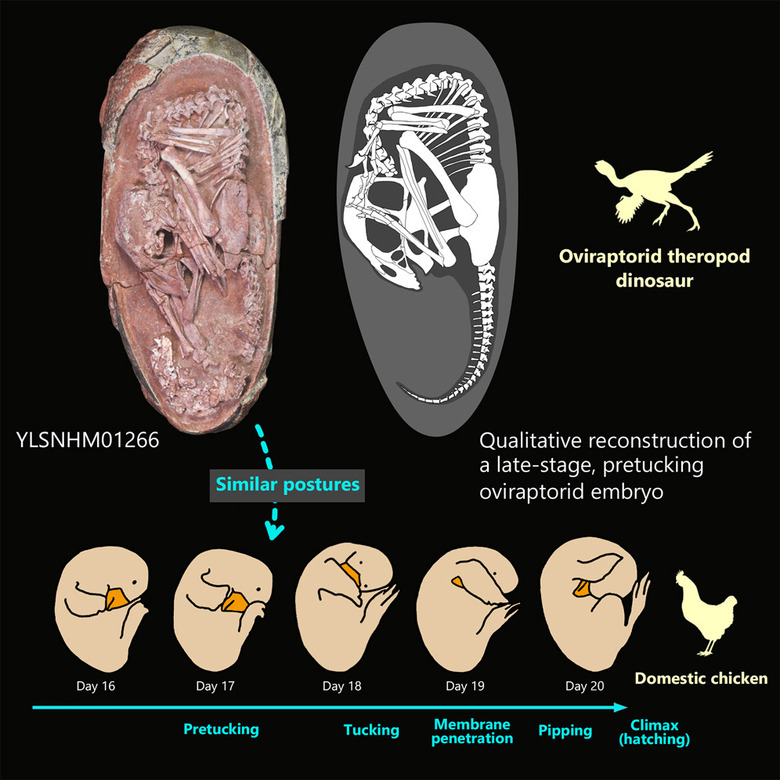Researchers Just Found A Well-Preserved Dinosaur Embryo
Well, it looks like we're one step closer to getting our own real-life Jurassic Park. Researchers have found a well-preserved dinosaur embryo inside of a fossilized egg. Dubbed "Baby Yingliang", the embryo is that of a toothless theropod group called oviraptorosaurs. Theropods are known for their bird-like feet. Scientists believe that modern-day birds are descended from the lineage of a group of smaller theropods.
Finding the dinosaur embryo
Our little one has just arrived. Welcome Baby Yingliang, a gorgeous fossil dinosaur embryo preserved inside its egg!
You're looking here at a baby dinosaur, not too long before it would have hatched. pic.twitter.com/NtXE8XODjT— Steve Brusatte (@SteveBrusatte) December 21, 2021
Researchers in the Yingliang Group, a stone mining company, originally found the stone in 2000. At the time, they believed it contained egg fossils but put the find in storage for 10 or so years. When work began on the Yingliang Stone Natural History Museum, researchers began sorting through the finds. Lida Xing, from the China University of Geosciences in Beijing, said that the museum staff first noticed bones in one of the cross-sections of a broken egg. (via CBSNews) They found the dinosaur embryo hidden inside one of the eggs.
After its initial find, researchers began studying the dinosaur embryo. They found that it used a distinctive tucking posture during its hatching. Previously scientists believed that this posture was unique to birds. This new information could further prove the evolutionary track of modern-day birds from dinosaurs like theropods. The researchers published their findings on the dinosaur embryo in the journal iScience.
What now?
Now that scientists have had time to study the dinosaur embryo, we know a good deal more about their hatching habits. For starters, this is the first time that the posture seen in the embryo has been seen in a non-avian dinosaur. It's also one of the rare occasions that researchers have managed to find a dinosaur embryo so well-preserved. Sure, we've found eggs throughout the last 100 years of exploration and digging, but rarely with such a preserved embryo.
For now, the dinosaur embryo will continue to be on display in the Yingliang Stone Natural History Museum. Researchers will continue to study the embryo in-depth, to see if there's more that we can learn about it. One thing the teams want to do is image the internal anatomy of the creature. However, rock still covers many of the body parts. Despite other fossil finds this year, this one is particularly exciting because of how rare it is.
What we do know is that this is a major step forward for archeological findings. And, researchers can use the information we've learned to study more fossilized dinosaur embryos. Now, all we need is a mad scientist willing to take any DNA found in the egg and turn it into a real-life dinosaur and open a theme park. Or—you know—we could just not do that.
